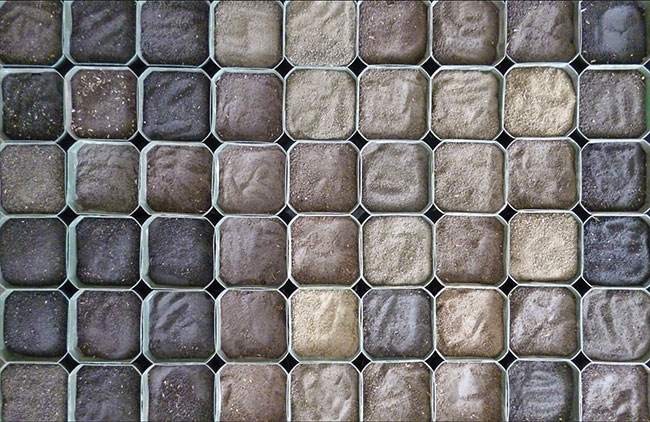
Features
Production
Digging into soil health
Learning how to build soil health from experts and peers at OFVC.
May 2, 2022 By Alex Barnard
 A diverse collection of soil types from within the five soil zones in Saskatchewan. Photo courtesy of Ryan Hangs, University of Saskatchewan.
A diverse collection of soil types from within the five soil zones in Saskatchewan. Photo courtesy of Ryan Hangs, University of Saskatchewan. The Ontario Fruit and Vegetable Convention (OFVC) included a series of sessions on soil health and cover crops for vegetable production. Sebastian Belliard, soil management specialist, field crops, with the Ontario Ministry of Agriculture, Food and Rural Affairs (OMAFRA), kicked off the day’s presentations with a discussion of the value of soil health testing.
“It’s become cliché to say that a soil health assessment needs to consider physical, chemical and biological parameters, but it’s worth repeating,” Belliard said in his presentation, adding that soil health tests that don’t touch on all three components have limited value.
Some of the benefits of soil health testing that Belliard noted include knowing where you stand in relation to other growers, understanding the effects your practices are having on your soil, testing assumptions and verifying observations, improving your understanding as a soil manager, and demonstrating sustainability, which will likely become more important as climate change mitigation measures require tangible demonstrations to access funding.
Two things he recommends growers consider when they want to improve their soil health are understanding what the goal is and, even more importantly, what the question is. “What is it that you want to know about soil health or about how your soil is functioning? From there, that determines what kind of goal you have for doing a soil health assessment,” Belliard said.
“Once you know that goal, you can understand what kind of testing you need to do and what sampling strategy to use to reach that goal.”
An OMAFRA-developed soil test is in the works, according to Bellard, currently called the Soil Health Assessment and Plan (SHAP). It’s comprehensive in that it has a variety of indicators, such as risk assessment, inherent soil properties, management, in-field assessments and analytical indicators.
He also stressed the importance of interpreting results in context and taking a more holistic view of soil health.
As part of a grower panel on the benefits of building soil health, Kurtis Allaer of Serkka Farms in Wallaceburg, Ont., and James Kingsbury of Sandy Shores Farms in Port Burwell, Ont., discussed practices and strategies they’ve tried out or incorporated on their farms.
Allaer farms on sandy loam and clay loam soils, rotating processing vegetables like tomatoes, cucumbers and peppers, with field crops like grains and soybeans, in addition to running a commercial turkey farm. He said his family has focused on good, basic agronomic principles as the backbone to their cropping strategy. The principles may be fairly basic, according to Allaer, but “holding them in high regard and making them a priority throughout the cropping system” are why he believes they work for him.
Key methods of improving soil health on his farm include drainage, diverse crop rotations, cover crops and manure, wherever possible, with minimum or conservation tillage. Controlling machine traffic in the fields with RTK GPS tracking, limiting wheeled traffic to certain areas of a field, and employing more tires for flotation are strategies he uses to prevent compaction.
“One of the key things that we do … is we really emphasize not doing anything unless the soil is completely fit. We really try and exercise patience as much as possible,” Allaer said in his presentation.
“It’s not rocket science, any of this stuff, and I don’t claim to be an expert on soil management, fertility, cropping systems or anything like that. But I do feel like, when we’ve made some basic fundamental things a priority, we’re seeing good consistency year after year with most of our crops, and we’re going to continue to do that.”
Kingsbury echoed many of the sentiments expressed by Allaer and added some clutch advice for those who are considering getting into cover cropping.
“You need to set your goals, you need to make a plan, you need to prepare your equipment ahead of time so it’s ready to go when the cover crop has to go in the ground,” he said in his presentation. “You need to buy your seed ahead of time, so that way you’re committed to doing it. Have a plan A, B and C, and possibly a D in your back pocket. Make your cover crops work for you, and don’t be afraid to trip, fall and fail on your way to success.”
One of the major challenges for Kingsbury when it comes to soil is wind and water erosion, as well as water management, as the area where he farms is environmentally sensitive and the soil is very sandy. Cover cropping and nurse and companion planting are strategies employed by Kingsbury to mitigate these issues.
Print this page